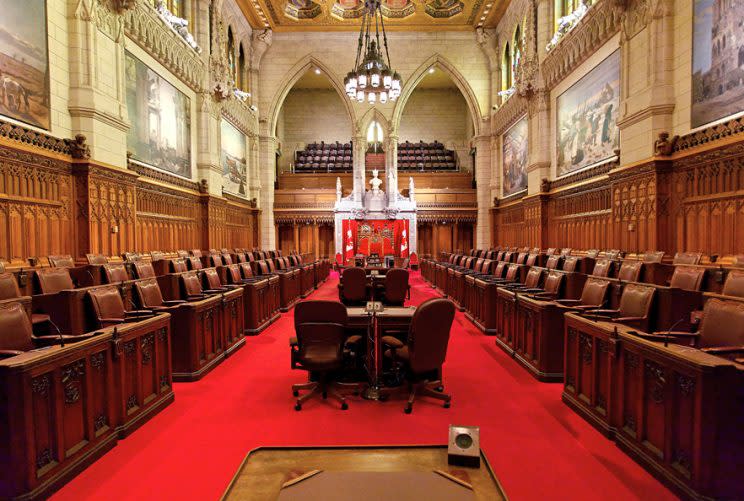Senate attendance records now available online

In an effort to bring more transparency to a level of government often criticized as being undemocratic, the government has created a website for the public to track how Canadian senators are using their time inside and out of the Red Chamber.
The website provides details on all members of the Senate, their party affiliation, the number of days they were present and attending to Senate business, the number of days they attended to other public business, and the number of days they took off for illness or leave.
The Senate has been in place since 1867. Each of the 105 senators has been appointed by a prime ministers and is responsible for providing a sober second thought for decisions made in Parliament. They assess and then object or approve legislation and policy, before sending it back to the House of Commons to be voted on. However, senators do not need prior experience in politics. In fact they come from all profession, including former journalists and athletes.
And until now, it hasn’t been easy for citizens outside of Ottawa to monitor senators’ activity and attendance.
David Moscrop, a political scientist at the University of British Columbia describes the role as a “fancy pension.” He says the Senate has had an accountability problem since it was first created, though it’s been more problematic in recent years.
“People are offended by the idea that un-elected individual can stall or defeat legislation and not be held accountable by the electorate,” he tells Yahoo Canada News. “This is part of the on-going attempt to make them more accountable by trying to get them to show up to work, which you would take for granted in most jobs. But some Senators have a history of not showing up.”
Previously, anyone who was curious about a Senator’s attendance record would have to go to the Senate in person and look through paper records. Their expenses are also public record, with a recent financial report showing that one Senator spent $5700 of taxpayers’ money to rent art.
“The Liberals have tried to walk a fine line between respecting the fact that (the Senate) isn’t going anywhere but trying to make it more productive and more reflective of contemporary values and expectations of what a – broadly speaking – democratic body should be doing,” says Moscrop.
It’s anyone’s guess as to how closely senators will be watched now that their workdays are made public. Nelson Wiseman, director of the Canadian Studies program and professor of political science at the University of Toronto, says aside from journalists who might be looking for a story, not many people in the public will keep track.
“I don’t think people will hang around and see how many people attend Senate meetings,” he says. “How many people watch (Cable Public Affairs Channel) and watch the debate of Senate committees? I think it’s good if these things are publicized but I don’t think there will be much public pick-up.”


